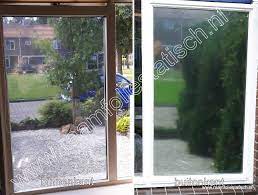Interior designers use a variety of tools and techniques to create functional spaces that are aesthetically pleasing. They may specialize in specific types of environments, such as residential design, corporate design, hospitality design, healthcare design, and exhibition design.
Some designers work for home-furnishings stores, providing design services to customers. Others are self-employed.
Basic elements of interior design
Interior design is the practice of arranging a space to maximize its utility and beauty. This practice is often used to accommodate the needs of a particular client, but it can also be applied to public spaces and commercial buildings. It is important to understand the basic elements of interior design, as they will help you develop a space that will suit your style and meet your needs.
Using shape to create impact is an essential element of interior design. The shapes of furniture, windows and doors can create focal points that draw the eye or detract from them. Shapes can be either geometric or natural and should be paired with other shapes to create balance. Color is another key element of interior design. Choosing complementary colors can create contrast, while analogous color schemes are harmonious.
A good interior designer will use a variety of techniques to make a room functional and attractive. They will consider everything from light and acoustics to building codes and accessibility requirements. They may also prepare construction documents, including floor plans and elevations; power and communication layouts; reflected ceiling plans; and furnishings and finish designs.
Space planning
The space planning process is one of the most important aspects of interior design. It involves determining how a space will be used and laying out the layout of each room. It also includes the arrangement of furniture and fixtures, as well as the selection of materials and finishes. Space planning is a critical step in any architectural project, and it ensures that the finished design meets the client’s functional requirements.
In addition to space considerations, it’s crucial to take into account traffic patterns and the flow of a space. This will impact everything from door placement to wall positioning. It’s also crucial to consider accessibility issues, including a clear path of travel for wheelchair users.
Good space planning is all about creating efficiency based on what’s already there. You can probably think of many instances in your own life when good – or bad – space planning made a huge difference to how you use your home, office or other facility. For example, you may notice that a well-planned kitchen makes it easier to move around and cook while leaving enough space for food prep.
Materials
There are a variety of materials that can be used in interior design. These include timber, rattan, leather, velvet and linen. Each adds a different personality and perspective to the space, but it is important to choose the right ones for the project. Natural materials like wood help to create a feeling of serenity and relaxation. They are often used in spas, hotels and other leisure spaces.
Other materials like stone can be used for flooring or walls and are very durable. These materials can also be eco-friendly, as they are made from renewable resources. Straw bale constructions are another option that can be used for walls or surfaces and provide a green alternative to traditional building materials.
Interior designers also consider a number of factors when choosing materials, such as the size of a room and its location. They also take into account acoustics and the effect that a material will have on people’s lives, such as whether it is easy to clean or safe for children. They also look at the environmental impact of the materials and try to use sustainable products where possible.
Lighting
Lighting is a vital component of interior design. It can transform a space into an inviting, productive, and relaxing environment. The right lighting can also make the colors and textures of a room more vibrant. The wrong type of lighting can have the opposite effect and make colors appear dull or oversaturated.
Layered lighting is a technique used to add depth and dimension to a space. It combines ceiling lighting with other types of light, such as recessed lights, wall sconces, and table lamps. It can help create a more balanced, cohesive look and is easy to change or update.
The right lighting can help to draw attention to certain elements of a room, such as a unique architectural feature or a piece of artwork. It can also create a mood and tell a story. In addition, lighting can help to highlight functional areas in a space and create a sense of movement. It can even affect the way a person perceives color, and can make a space feel bigger or smaller than it really is.
Furnishings
Furniture, decor, and artwork are the elements that make a room come alive and contribute to its overall style, atmosphere, and function. Furnishings can include everything from chairs to rugs, wall art, and sculptures. They should be aesthetically pleasing and suit the homeowner’s taste and lifestyle.
Transitional design is a popular interior design trend that blends traditional and modern furnishings, fabrications, and decorative features. Its key characteristics include clean lines and a mix of bold colors, textures, and materials. Its inspiration draws from multiple sources, including traditional Greek and Roman architecture.
Ultimately, a successful career in interior design requires excellent organizational skills, creativity, and strong leadership. Interior designers must also be able to effectively communicate with clients and work well as part of a team. They must also have a solid understanding of building codes, regulations, and accessibility standards. Finally, they must be able to work within budgets and meet deadlines. Those with these skills can pursue an exciting and rewarding career in interior design. There are many different paths to becoming an interior designer, and some specialize in specific areas of the field.



